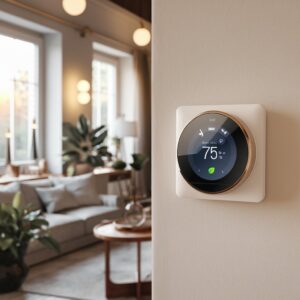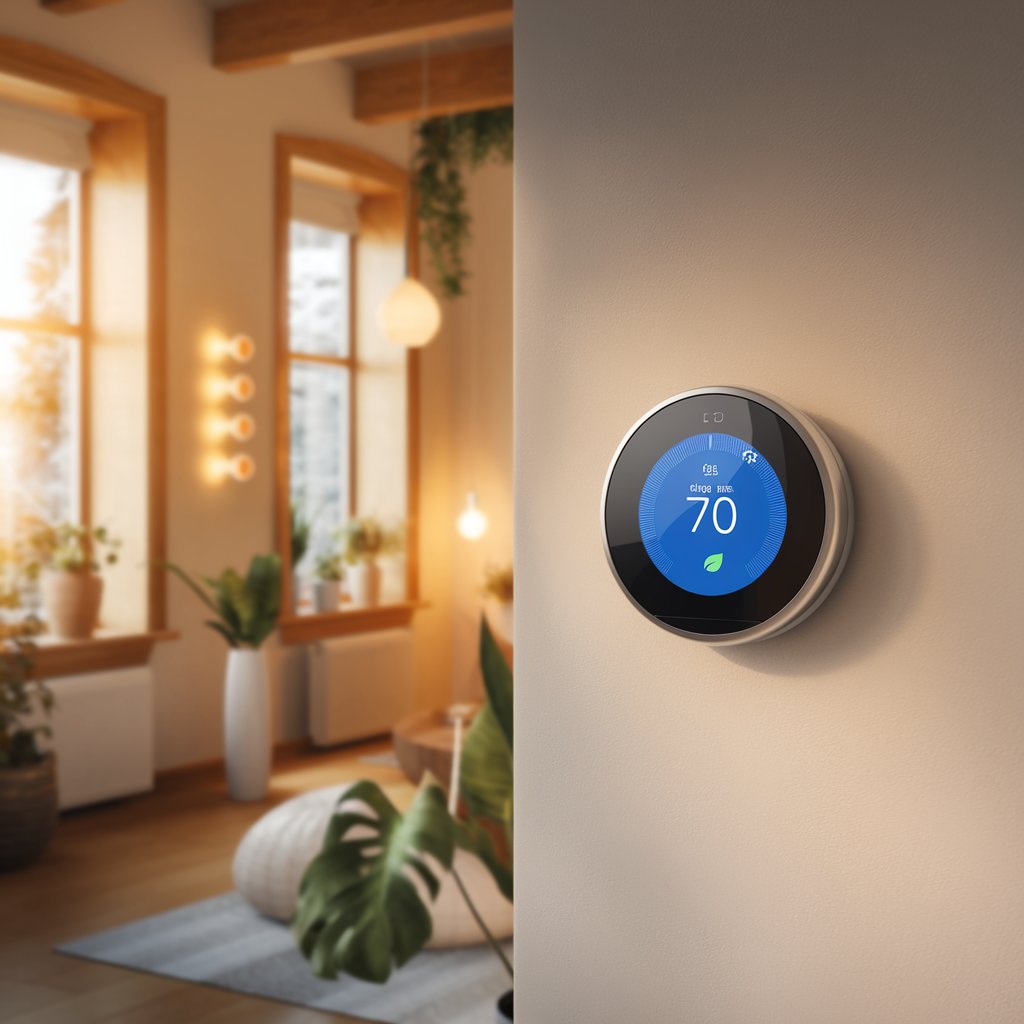Are your energy bills too high? A smart thermostat might be the answer. These clever devices can cut your heating and cooling costs without sacrificing comfort. Let’s explore how these modern gadgets work and the real savings they offer.
Contents
What is a Smart Thermostat?
A smart thermostat is like a brain for your home’s heating and cooling system. It learns your schedule and preferences. Then it adjusts the temperature automatically. You can also control it from your phone, tablet, or computer.
Popular Smart Thermostat Brands and Their Average Costs
| Brand | Model | Average Cost | Key Features |
|---|---|---|---|
| Nest | Learning Thermostat | $249 | Auto-scheduling, Phone control, Energy history |
| Ecobee | SmartThermostat Premium | $239 | Room sensors, Voice control, Air quality monitoring |
| Honeywell | T9 Smart | $199 | Multi-room sensors, Smart alerts, Geofencing |
| Amazon | Smart Thermostat | $79 | Alexa compatible, Energy Star certified, Simple interface |
How Much Money Can You Save?
Smart thermostats can make a big difference in your energy bills. Here are the average yearly savings reported by different sources:
- Energy Star: 8% on heating and cooling bills
- Nest: $131 to $145 per year
- Ecobee: Up to $200 per year
- Department of Energy: 10-12% on heating, 15% on cooling
Real Savings Example
Let’s break down potential savings for an average American household:
- Average yearly energy bill: $2,200
- Portion spent on heating/cooling (50%): $1,100
- Typical savings with smart thermostat (10%): $110
How Smart Thermostats Save Money

1. Automatic Schedule Adjustment
Smart thermostats learn when you’re home and away. They adjust temperatures automatically. This means no more heating or cooling an empty house.
2. Learning Your Preferences
These devices remember your temperature choices. They create a schedule that saves energy while keeping you comfortable.
3. Smart Features That Cut Costs
- Geofencing: Uses your phone’s location to know when you’re coming home
- Remote Control: Change settings from anywhere using your phone
- Weather Monitoring: Adjusts based on outside temperature
- Usage Reports: Shows how much energy you use and when
- Maintenance Alerts: Tells you when to change filters or service your system
Tips to Maximize Your Savings
1. Use the Programming Features
- Set different temperatures for day and night
- Create a weekend schedule
- Use vacation mode when away
2. Follow Energy-Saving Temperature Guidelines
| Time of Day | Winter Setting | Summer Setting |
|---|---|---|
| When Home (Awake) | 68°F (20°C) | 78°F (26°C) |
| When Sleeping | 65°F (18°C) | 82°F (28°C) |
| When Away | 62°F (17°C) | 85°F (29°C) |
3. Use Extra Features
- Set up maintenance reminders
- Check monthly energy reports
- Use room sensors for better temperature control
Installation and Setup
Getting started is easier than you might think:
1. Check Compatibility
- Most systems work with smart thermostats
- Some older systems might need an adapter
- Check the manufacturer’s website first
2. Installation Steps
- Turn off power to your HVAC system
- Remove old thermostat
- Connect new wiring (usually color-coded)
- Mount new thermostat
- Follow app setup instructions
3. Professional Installation
- Costs between $100-200
- Good option if you’re not comfortable with wiring
- Often includes system check and optimization
Common Questions About Smart Thermostats
Q: How long until I recover the cost?
A: Most people break even within 1-2 years through energy savings.
Q: Do I need Wi-Fi?
A: Yes, for full features. But they still work as basic thermostats without Wi-Fi.
Q: Can I install it myself?
A: Most people can. But hire a pro if you’re unsure about electrical work.
Making the Switch
Smart thermostats are a smart investment. They save money and make life easier. The upfront cost might seem high. But the savings add up quickly. Plus, many utility companies offer rebates for installing them.
Steps to Get Started
- Check your system compatibility
- Look for utility company rebates
- Compare different models
- Choose professional or DIY installation
- Set up your preferences and schedule
Remember, the key to saving money is using all the features. Take time to learn your device. The more you use it, the more you’ll save.



